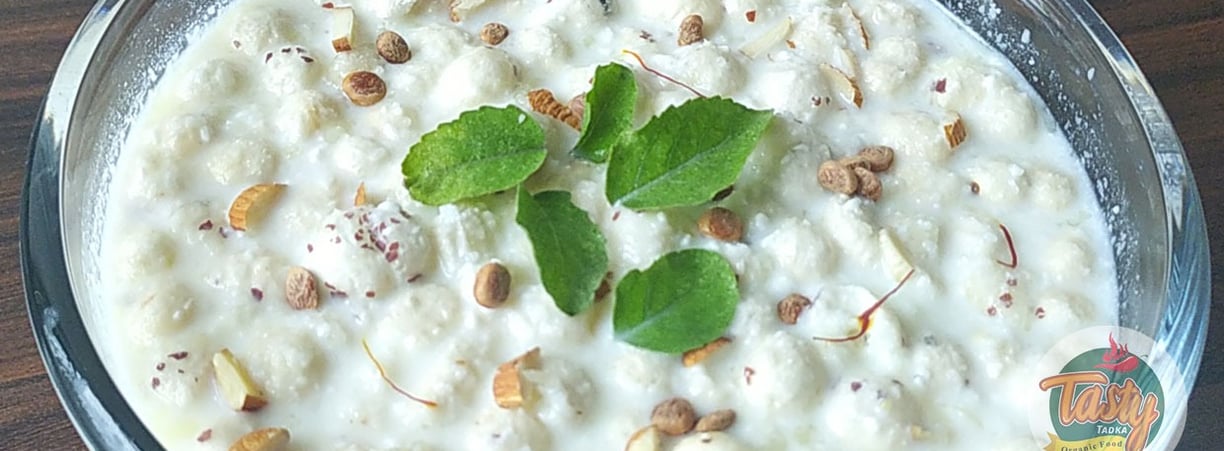The Sacred Recipe of Charnamrit: A Divine Elixir for Hindu Rituals
2/17/20258 min read


Introduction to Charnamrit
Charnamrit, often referred to as the sacred nectar, holds a significant place in Hindu rituals and spiritual practices. This divine elixir is traditionally composed of a mixture of water, milk, honey, and other natural ingredients, infused with the essence of reverence and devotion. The creation and consumption of Charnamrit symbolize a deep respect for deities and reflect a commitment to spiritual purification.
Historically, Charnamrit has been used in various Hindu ceremonies, notably during poojas and yagnas, where it is offered to idols and deities as part of the worship process. The term 'Charnamrit' translates literally to 'nectar of the feet,' emphasizing its role in honoring divine presence. It is believed that by partaking of Charnamrit, devotees receive blessings and are spiritually uplifted, as it represents a direct connection to the divine force.
The preparation of Charnamrit often involves the recitation of specific mantras, infusing the mixture with spiritual vibrations. This profound act underscores the belief that the nectar is not merely a ritual substance but a spiritual interface through which devotees can express their devotion. It is often served after worship, fostering a sense of community and reinforcing the notion of sharing divine blessings among participants.
Furthermore, Charnamrit is associated with the notion of sanctity and purity; its consumption is believed to cleanse the soul and bring inner peace. Thus, this sacred drink serves not only as an offering but as a channel for spiritual awakening, forming an integral part of Hindu rituals. Understanding Charnamrit's significance provides valuable insight into its role in the rich tapestry of Hindu spiritual practices, highlighting both its historical context and enduring prominence in contemporary worship.
Ingredients of Charnamrit
Charnamrit, often revered as a sacred elixir in Hindu rituals, is crafted from a harmonious blend of key ingredients, each contributing unique benefits and spiritual significance. The primary ingredients include milk, yogurt, and honey, which form the foundation of this divine concoction, while sugar, water, and various herbs may be added as optional elements to enhance its properties.
Milk serves as the cornerstone of Charnamrit, symbolizing purity and nourishment. It is rich in essential nutrients such as calcium, protein, and vitamins, making it a vital component for overall health. Furthermore, the presence of milk in Charnamrit emphasizes the importance of life's sustenance, aligning with spiritual practices that promote well-being.
Yogurt, another fundamental ingredient, is known for its probiotic properties that aid digestion and strengthen the immune system. In Hinduism, yogurt is associated with auspiciousness, suggesting that its incorporation into Charnamrit can purify both body and mind, further enhancing the spiritual experience during rituals.
Honey is added for its sweetness and natural flavor, but it also embodies the concept of life and vitality. As a natural source of energy and antioxidants, honey boosts overall health, fostering a sense of balance and harmony that complements the spiritual intention behind Charnamrit.
Additional ingredients like sugar can be included for sweetness, while water often serves as a medium to adjust the consistency. Various herbs, such as tulsi leaves or cardamom, may also be added to imbue the potion with medicinal properties, promoting wellness and supporting the chanting of mantras during rituals. These optional ingredients can enrich the essence of Charnamrit, making it a deeply personal and versatile offering.
The Preparation Process
Preparing Charnamrit is a meticulous process that requires both reverence and attention to detail, as this sacred elixir holds significant importance in Hindu rituals. To begin, ensure that you have the necessary utensils, which typically include a clean bowl, a spoon or ladle for mixing, a separate container for collecting water, and aromatic ingredients such as sugar, milk, honey, and a few drops of fragrant substances like rose water. Each of these components plays a crucial role in the final composition of Charnamrit.
The first step in the preparation involves washing your hands and ensuring the workspace is clean. In Hindu traditions, cleanliness is paramount, as it symbolizes purity and respect towards the divine. It is also advisable to wear clean clothes while preparing Charnamrit to maintain the sanctity of the ritual. After setting the workspace, gather all the ingredients and utensils needed for the preparation.
Next, start by pouring water into the bowl, symbolizing the essence of life. Mix in the milk gradually, as it acts as a base for the Charnamrit. As you stir, incorporate honey and sugar to achieve the desired sweetness. The proportions may vary based on personal preference, but achieving a balanced blend enhances the flavor and spiritual essence of the drink.
Once the main ingredients are well combined, add rose water gently to infuse the mixture with a divine fragrance. Stir the concoction with intention, visualizing the joy and blessings you seek from the offering. In Hindu culture, the mindset during preparation is vital; a pure heart and focused intention can purify the Charnamrit even further, amplifying its sanctity. After completing the mixing, allow it to sit momentarily, as this resting period helps the ingredients meld fully.
Finally, when serving Charnamrit, it is customary to do so in small amounts in a clean vessel, as it is often offered to deities or shared among devotees. This simple yet profound preparation process embodies both the tradition of Hindu practices and the spirit of devotion inherent in creating this divine elixir.
The Importance of Rituals in the Preparation
The preparation of Charnamrit is steeped in profound spiritual significance, characterized by the performance of various rituals and prayers that enhance its sanctity. This divine elixir, often offered to deities during puja, symbolizes the essence of devotion and reverence in Hindu traditions. To prepare Charnamrit, practitioners typically gather at a sacred space, ensuring that the environment reflects purity and tranquility. The ambiance is enriched with fragrant flowers, incense, and lamps, creating a setting conducive to spiritual practices.
Commencing with a purifying bath and clad in clean garments, the devotee invokes a sense of sanctity. Ritualistic cleansing of the utensils to be used during preparation is equally crucial, signifying the removal of impurities. As the preparation begins, devotees often engage in chanting mantras elaborating the qualities of the deities to whom the Charnamrit will be offered. These sacred chants not only invoke divine blessings but also transform the preparation into a meditative experience, fostering a deep connection with the cosmos.
Furthermore, the integration of prayers during the mixing of ingredients—usually a blend of water, milk, yogurt, honey, and sugar—enhances the elixir's spiritual potency. Each ingredient is chosen for its symbolic importance and health benefits, further accentuating the significance of this ritual. By offering Charnamrit to deities, practitioners express their devotion, surrendering personal desires in pursuit of higher spiritual goals. This offering serves as a medium of communion, where devotees seek divine mercy and blessings for themselves, their families, and their community.
The allure of Charnamrit is not solely in its taste but also in the conscious effort and reverence embodied in its preparation. This intertwining of ritual, prayer, and spirituality underscores the essence of devotion in Hindu worship, allowing participants to engage more deeply with their faith and the divine.
Health Benefits of Charnamrit
Charnamrit, a revered concoction in Hindu rituals, serves not only as a spiritual offering but also as a source of numerous health benefits. This sacred elixir comprises a blend of curd, sugar, water, and often includes other natural ingredients such as honey and various fruits. Each component imbues Charnamrit with significant nutritional value that can contribute positively to health and well-being.
One of the primary advantages of consuming Charnamrit is its impact on digestion. The probiotic properties of curd promote a healthy gut flora, facilitating the digestive process. In traditional Indian medicine, a balanced digestive system is considered fundamental to overall health, which in turn supports the body's ability to absorb essential nutrients efficiently. Additionally, the natural sugars present in Charnamrit provide a quick source of energy, crucial for maintaining vitality throughout the day.
Immunity is another critical aspect of well-being where Charnamrit can play a beneficial role. The ingredients provide antioxidants that help combat oxidative stress within the body. Antioxidants are known to strengthen the immune system, thereby enhancing the body's ability to ward off illnesses. Furthermore, certain ingredients such as honey possess antibacterial properties, adding additional support to the immune response.
Moreover, Charnamrit is often associated with mental well-being. The ritualistic aspect of its consumption during religious observances fosters a sense of community, spirituality, and mindfulness. This psychological benefit can promote emotional health, making it a holistic addition to one’s lifestyle. Overall, incorporating Charnamrit into regular practice can lead not only to spiritual enrichment but also to substantial improvements in physical health, underpinning its significance in Hindu rituals.
Charnamrit in Different Traditions
Charnamrit, regarded as a divine elixir in Hinduism, holds significant importance across various traditions and regions. Its preparation and utilization can vary markedly, reflecting the rich cultural diversity inherent in the practice of Hindu rituals. The basic composition of Charnamrit typically includes water, sugar or jaggery, and the sacred remnants from a deity’s feet. However, adaptations in the recipe emerge based on regional customs and religious sects.
In northern India, for example, the preparation of Charnamrit often incorporates ingredients such as honey and milk, enhancing the elixir's sweetness and nutritional value. This variation is particularly observed in temples dedicated to deities like Krishna and Ram, where Charnamrit is presented to devotees during puja ceremonies as a symbol of the divine's grace. In contrast, southern temples may emphasize a simpler preparation method, wherein only water and jaggery are used, aligning with the local dietary practices and beliefs surrounding sanctity and purity.
Moreover, communities influenced by specific sects, such as the followers of the Vaishnavism movement, might adopt unique ingredients inspired by their ideological perspectives. For instance, some sects advocate for the inclusion of specific herbs believed to possess spiritual benefits, reinforcing the notion that Charnamrit is not merely a religious offering but a vital component of their spiritual practice.
Furthermore, the cultural context influences how Charnamrit is shared amongst devotees. In rural settings, it may be distributed among the community after temple rituals, signifying collective blessings, while in urban areas, it might be reserved primarily for individual worship. These variations illustrate the multifaceted nature of Charnamrit across different traditions, highlighting how regional practices contribute to the broader spectrum of Hindu rituals, symbolizing the divine connection between the worshipper and the Supreme Being.
Conclusion and Final Thoughts
Charnamrit holds a profound significance in Hindu rituals, serving as more than just a blessed drink. It embodies the essence of devotion and the divine connection between the worshipper and the divine. This sacred elixir, infused with the blessings of the deities, fosters spiritual growth and personal reflection during ceremonies. Its preparation is intentional, with each ingredient symbolizing purity and devotion, inviting practitioners to participate in a sacred tradition that spans centuries.
The act of consuming Charnamrit during religious ceremonies elevates the spiritual experience, making it a powerful tool for devotees to establish a closer relationship with their faith. As believers partake in this elixir, they are reminded of the essential values of humility, surrender, and gratitude, reinforcing their commitment to spiritual practices. The joy that Charnamrit brings can transform mundane moments into meaningful experiences, filled with light and purpose.
Incorporating Charnamrit into personal rituals can be a transformative journey, encouraging practitioners to reflect on their beliefs and the significance of sacred food in their spiritual lives. It serves as an invitation to deepen one's understanding of faith and its offerings. As individuals create their sacred spaces, the presence of Charnamrit not only enhances the atmosphere but also promotes a sense of interconnectedness with other practitioners and the divine realm.
Ultimately, the ritualistic use of Charnamrit opens doors to meditation, inner peace, and spiritual fulfillment. As you engage with this divine elixir, consider its transformative power and the abundance of joy it can bring to your spiritual journey. Embrace the opportunity to personalize your rituals, allowing Charnamrit to enrich your life and foster a deeper appreciation for the spiritual path you walk.
News
Stay updated with the latest entertainment and gossip.
Entertainment
© 2025. All rights reserved.


